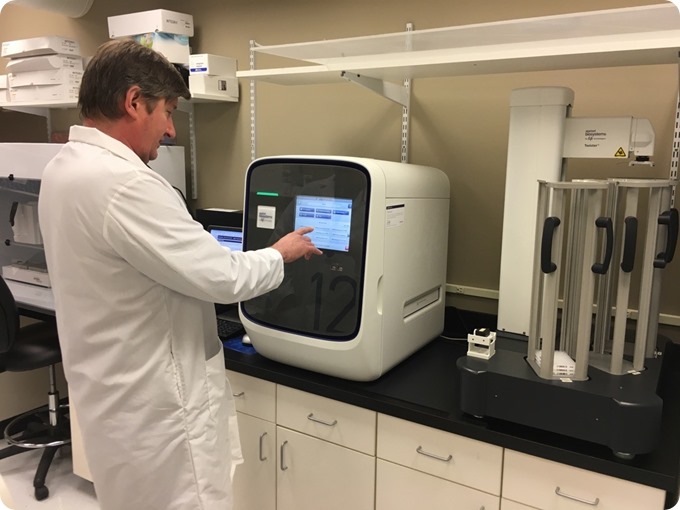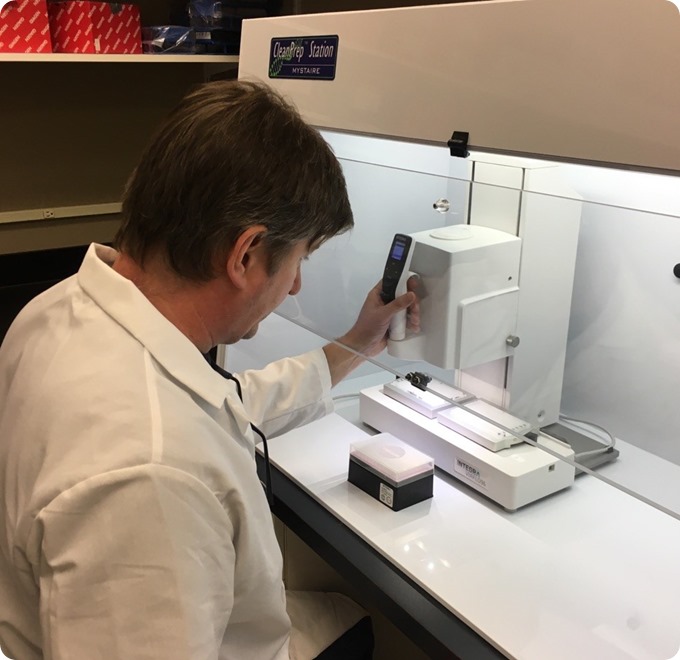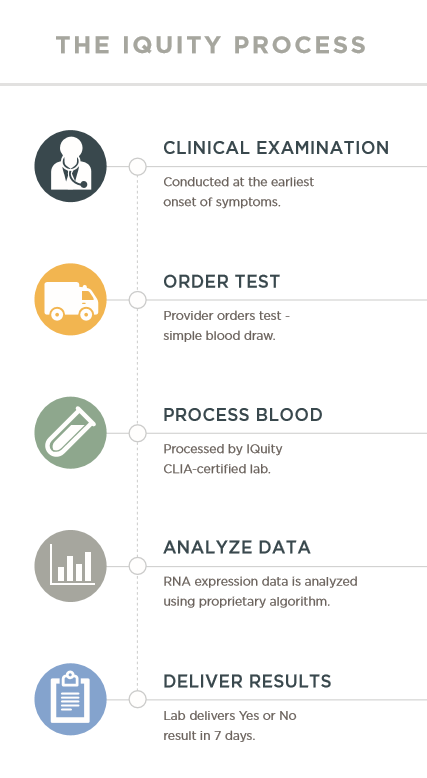An interview with Dr. Chase Spurlock, CEO, discussing IQuity's research into IncRNAs and how they are linked to autoimmue diseases.
What are long non-coding RNAs (lncRNAs) and how do they differ from messenger RNAs (mRNAs)?
Well, the central dogma of biology states that DNA makes RNA and RNA makes proteins. However, there are many different types of RNAs, and only one of them, the messenger RNA (mRNA), gives rise to proteins. Some others don't make proteins at all.
When the maps of the human genome were completed, it was noticed that there were stretches of DNA sequence for which no function had been identified. We called these regions “junk DNA.” But over a decade later, we now appreciate that this “junk” is in fact exerting some sort of biological function, and one way is through the production of long non-coding RNAs, or lncRNAs.
lncRNAs emerged as a new class of RNA molecule predominantly in the late 2000s and we're still trying to fully recognize their importance. lncRNAs don't give rise to proteins, but they're powerful regulators of other genes that are often nearby.

IQuity Senior Scientist John T. Tossberg, M.S., analyzes the genes in a patient sample using a QuantStudio Real-Time PCR system.
Why is IQuity researching into lncRNAs?
IQuity has been interested in lncRNAs because many of the protein-coding genes, the mRNAs — which are important in the immune system, and play important roles in mounting an effective immune response — have lncRNAs in close proximity. So our curiosity led us to consider a guilt-by-association strategy. We began to chart our research in this area looking for co-expressed lncRNAs and nearby mRNAs that we knew to be important.
We studied whether these lncRNAs were influencing the genes next door, and if so, if we could modulate a lncRNA to alter a cell’s function or phenotype. The answer was yes. So then the next question was, could these lncRNAs be knocked down to treat autoimmune diseases or diseases of the immune system? We'll need a little more time to figure that one out.
In the meantime, we've investigated the expression of known lncRNAs and those we’ve identified ourselves, trying to see if they have altered expression levels in diseased and non-diseased patients. What we found is that differences in lncRNA expression levels among our patient populations far exceed anything we've ever observed with mRNAs, so we've started to explore lncRNAs in greater detail and will continue this work in the future.
What discoveries have so far been made into the link between RNA and the diagnosis of autoimmune diseases?
Differences in gene expression have been explored for many years across many conditions, including autoimmune diseases. In the early 2000s, the invention of microarray gene expression technologies gave us the ability to rapidly screen expression levels of many known genes at the same time.
These early studies focused primarily on mRNAs, where the differences in expression can be quite modest. Today, though, we have the ability to not only screen mRNAs, but also non-coding RNAs, whether they be short non-coding RNAs or lncRNAs. This has been accomplished primarily through whole genome RNA sequencing technologies that have emerged over the last 10 years.
A recent article in JAMA Neurology highlighted a group at Harvard's work with short non-coding RNAs. According to the MRI findings, these microRNAs changed in patients with multiple sclerosis. That's just one recent innovation, and it further reinforces that others are finding useful information at the level of RNA.
Many people in the scientific community are investigating RNA, and in our research we focus on lncRNAs and explore their utility in the diagnostic process.
We believe that our data highlights the tremendous information that's contained at the level of RNA, and we're committed to developing tests for multiple sclerosis (MS), irritable bowel syndrome (IBS), inflammatory bowel disease (IBD, which includes Crohn's and colitis), and then soon, rheumatoid arthritis (RA), lupus and fibromyalgia.
We're going to offer a unique tool for providers in the autoimmune field.

John T. Tossberg, M.S., a senior scientist at IQuity, uses a VIAFLO 96-channel pipette, which enables faster processing of samples in the lab.
Why have conditions such as fibromyalgia traditionally been difficult to diagnose?
Up until the last decade, we didn't have diagnostic criteria to follow in order to make a definitive diagnosis. Fibromyalgia remains a clinical diagnosis, and it's one of exclusion.
The American College of Rheumatology (ACR) states that sometimes fibromyalgia is confused with rheumatoid arthritis or lupus, and unlike fibromyalgia, these rheumatic diseases cause inflammation in the joints and tissues.
Fibromyalgia is characterized by widespread pain over time, all over the body at the muscle-tendon junctions, and it wasn't until the ACR came out with these diagnostic criteria requiring evidence of certain tender points in the body that we were able to codify a system to arrive at a fibromyalgia diagnosis.
Many of the commonly used lab tests are looking to exclude other possibilities, and we've yet to see a definitive test that identifies fibromyalgia.
Our research shows that fibromyalgia syndrome, RA and lupus patients exhibit very unique RNA gene expression signatures, and these differences are measurable. We're very hopeful that this tool is going to provide actionable information in the clinic for providers.
How do you think the diagnosis of such conditions could be overcome using lncRNA information?
We're going to do everything in our power to give providers the best information so that they can help their patients. The study of lncRNAs is an area of active investigation in the scientific field, and linking their expression and function to clinical applications is something that a lot of people are just now beginning to explore. Through our analytical approaches, we are able to sift through information contained at the level of RNA and develop tools that doctors can leverage to make clinical decisions.
IQuity recently received a $150,000 grant from the National Institutes of Health’s (NIH) Small Business Innovation Research (SBIR) program. How do you plan to use this grant?
IQuity is going to use this grant to further explore lncRNA biology in the context of fibromyalgia and other rheumatic diseases. We received a similar grant last year to investigate lncRNAs in multiple sclerosis, and these studies exceeded our expectations and showed differences in lncRNA expression patterns that were far greater than we could’ve hoped.
This award will allow us to test similar hypotheses in rheumatology across a large number of patients diagnosed with fibromyalgia syndrome and other rheumatic diseases. We're looking to forge the connection between lncRNAs and these diseases. lncRNAs in the context of rheumatologic diseases and autoimmune disease in general remains in its infancy. We're very excited to be among the first to chart this area of biology.

What is IQuity’s vision?
We strive to be a partner with healthcare providers by giving them access to information through our analytical approaches that they haven't had up until this point. We plan to continue our research and development efforts to bring additional tests to market. We want providers to have the best tools possible so that they can best treat these challenging diseases.
What do you think the future holds for patients with autoimmune diseases?
Better diagnostic tools coupled with better treatments, as well as disease management strategies, which should lead to better outcomes.
At IQuity, we've also been actively contemplating the development of a tool that could be used to measure disease activity and track the stages of disease in patients.
Although we are not a direct-to-consumer company, we have the consumer in our minds, and the main focus of our work is the patients who are afflicted with these autoimmune conditions. We want to see patients lead long, productive lives. We’re doing all that we can to arm their providers with information so that they can to mitigate the damaging consequences of chronic illnesses like autoimmune disease.
Where can readers find more information?
Our website is IQuity.com.
About Dr. Chase Spurlock
 Dr. Chase Spurlock is committed to translating basic science discoveries into improved diagnostic strategies for patients with autoimmune conditions. As CEO of IQuity, he has day-to-day oversight of all aspects of the company ensuring the vision and mission is realized.
Dr. Chase Spurlock is committed to translating basic science discoveries into improved diagnostic strategies for patients with autoimmune conditions. As CEO of IQuity, he has day-to-day oversight of all aspects of the company ensuring the vision and mission is realized.
Dr. Spurlock’s published work explores the molecular basis for autoimmune disease and further examines therapeutic targets in the management of these diseases leveraging a diverse set of genomic and biochemical approaches including gene expression and next-generation sequencing technologies.
Dr. Spurlock is a Phi Beta Kappa graduate of The University of the South, where he received his bachelor’s degree in biology, magna cum laude, with departmental honors. He earned his Ph.D. in microbiology and immunology from Vanderbilt University School of Medicine, where he was awarded the Sidney P. Colowick award for outstanding research.